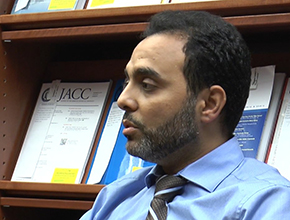Roman Jaeschke: Thank you very much for this Mark. Now, the second question deals with thromboembolism and its treatment. We are both old enough to have witnessed a number of changes over the last 20 years. I wonder if you could take our viewers through the history of the last several years of thromboembolism treatment and describe its milestones.
Mark Crowther: Venous thromboembolism has really progressed remarkably in the last 20 years. Twenty years ago, patients with acute deep vein thrombosis or pulmonary embolism were predominantly treated in the hospital with unfractionated heparin, transitioned to warfarin or other vitamin K antagonists, which were then maintained on an outpatient basis, using international normalized ratio (INR) monitoring. Although this treatment strategy is still used in some patients, such as those with significant degrees of renal insufficiency, in many patients, the treatments have changed dramatically.
The first major change, probably now about 20 years ago, was the use of weight-adjusted fractionated low-molecular-weight heparin, which can be administered without any form of monitoring. As a result of that, in uncomplicated patients, we were able to move treatment from the inpatient to the outpatient setting. And in the outpatient setting, it is much simpler to deliver care to patients and patients do better.
The next major advance was the identification of the fact that in patients who were being treated with warfarin you provide much better care if they are organized into systems of care with anticoagulant clinics. Traditionally, warfarin was looked after by primary care physicians who really do not have the experience and, in many cases, the software required to carefully track patients taking warfarin. With the advent of large clinics, which looked after warfarin, we saw improvements in time and the therapeutic range and a reduction in complications of both thromboembolism and bleeding.
The next major advance has been the introduction of the novel oral anticoagulants. There are really 2 different strategies: dabigatran and edoxaban have a short course of low-molecular-weight heparin, with the switch to the new agent after 5 to 7 days of therapy, and rivaroxaban and apixaban use an enhanced dose of their drug for the first short period of time, followed by a longer-term maintenance dose. The use of these drugs really has greatly simplified the management of acute venous thromboembolism, mostly because it has eliminated the need for any form of laboratory monitoring and the new drugs have many fewer drug-drug and drug-food interactions than did warfarin.
One of the areas that is being explored right now is the use of reduced doses [of novel oral anticoagulants] for a long-term secondary prophylaxis. Apixaban already has an approval for a low dose for prophylaxis beyond 6 months and rivaroxaban is exploring this. By reducing the risk of bleeding but maintaining efficacy, it is very likely that these low-dose, long-term therapies will allow us to treat many patients for many years very safely and essentially eliminate the risk of recurring venous thromboembolism.
 English
English
 Español
Español
 українська
українська




